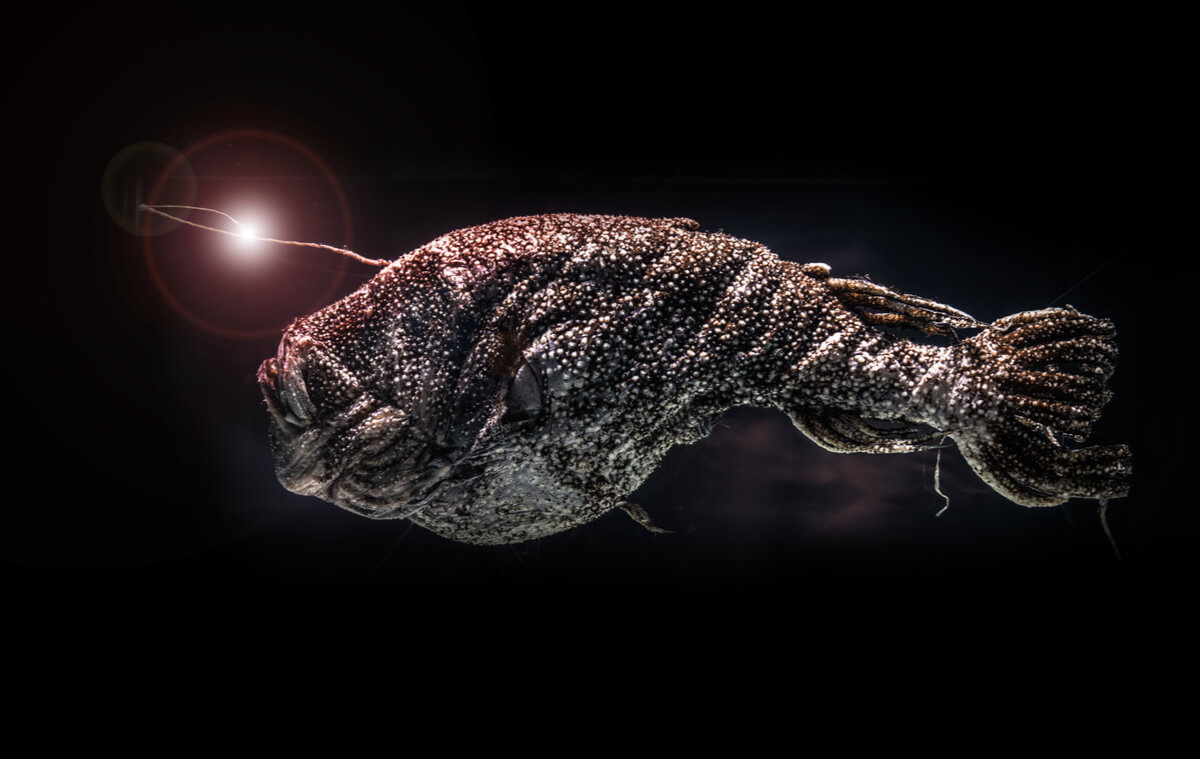Deep-Sea Fish Have Excellent Vision


Written and verified by biochemistry Luz Eduviges Thomas-Romero
According to recent findings, deep-sea fish that swim at depths where the sunlight can’t reach have developed excellent vision that’s unprecedented in the animal kingdom.
This powerful vision is certainly very much in tune with the faint glow and sparkle emitted by other creatures on the seafloor. If you want to know more about this fascinating phenomenon, read on.
What proteins are crucial for vision?
It’s important to note that photoreceptor cells (cones and rods) are specialized light-sensitive neurons. These cells possess opsin-like proteins that respond to light based on the visual pigments they possess.
Cones contain three different types of opsins. One with greater sensitivity to long wavelengths (red light), one that is sensitive to medium wavelengths (green light) – and one with greater sensitivity to short wavelengths (blue light). The combination of the three colors (red, yellow, and blue) is the basis of color perception.
The rods, which contain rhodopsin, are more sensitive to the level of brightness. Thus, they are responsible for vision in low light conditions, as they have a peak of higher sensitivity towards the 500-nanometer wavelength, i.e. blue-green light. The only problem is that the perception is monochromatic and, in humans, this only allows us to see a scale of “grays” depending on the amount of light.

How deep-sea fish have developed supervision?
As recently revealed, some deep-sea fish possess an extraordinary number of genes coding for rod rhodopsins. As mentioned, these are the retinal proteins that detect light level and are essential in dim lighting conditions.
These additional genes have diversified to produce protein variants, which have evolved with the ability to capture all possible photons at multiple wavelengths. This could mean that, despite the darkness, fish roaming the deep ocean actually see in color.
Why are these finding in deep-sea fish important?
At a depth of 1000 meters (3300 feet), in clear water, the last glint of sunlight is gone. For this reason, it’s expected that, in the realm of darkness, fish eyes would be rather atrophied, because in the dark they would have no clear biological function.
Despite previous beliefs, researchers have now realized that the deep sea is permeated by a faint bioluminescence. This comes from different animal species such as shrimp, octopus, bacteria and even some fish, but it can’t be perceived very easily. It is, therefore, normal to expect certain predators to adapt and improve their vision to detect their prey.
In this marine niche, most vertebrate eyes would barely be able to detect a subtle glow. However, a group of experts searched for opsin genes in 101 fish species, including seven deep-sea fish from the Atlantic Ocean.
In their research, they found that most shallow-water fish have one or two RH1 opsins. However, four of the deep-sea species stood out from the rest by possessing at least five RH1 genes. Surprisingly, one of the deep-sea fish, the silver spinyfin (Diretmus argenteus), had 38 RH1 genes.
A fish tuned to bioluminescence
The above study also revealed that many of the opsin proteins found in the rods of Diretmus argenteus are sensitive to different wavelengths. This allows the species to see the full range of bioluminescence (the faint light emitted by other creatures).
They also indicate that animals living in environments with an extreme lack of light may be subject to natural selective pressures to improve visual performance. For these fish, the faint bioluminescence at depth may be as vivid and varied as the bright surface world.
Other deep-sea fish can see red light
Another study that looked at three types of deep-sea dragonfish found that animals in this taxon not only produce red light in light organs below the eye, but also have eyes that are sensitive to this part of the spectrum.
Undoubtedly, this ability gives them the unique advantage of being able to communicate with each other. Generally, this should be used for reproduction, but also to illuminate while fish hunt their prey or to flee from potential predators, all creatures that can’t see long wavelengths.

Application of this knowledge
Potentially, these studies form a knowledge base that could, perhaps, in the future contribute to alleviating, for example, night blindness and even treatment of neurodegenerative retinal disease. Undoubtedly, the future applications of these findings are promising to say the least.
All cited sources were thoroughly reviewed by our team to ensure their quality, reliability, currency, and validity. The bibliography of this article was considered reliable and of academic or scientific accuracy.
- Musilova, Z., Cortesi, F., Matschiner, M., Davies, W. I., Patel, J. S., Stieb, S. M., … & Mountford, J. K. (2019). Vision using multiple distinct rod opsins in deep-sea fishes. Science, 364(6440), 588-592.
- Douglas, R. H., Genner, M. J., Hudson, A. G., Partridge, J. C., & Wagner, H. J. (2016). Localisation and origin of the bacteriochlorophyll-derived photosensitizer in the retina of the deep-sea dragon fish Malacosteus niger. Scientific reports, 6, 39395. https://www.nature.com/articles/srep39395
This text is provided for informational purposes only and does not replace consultation with a professional. If in doubt, consult your specialist.